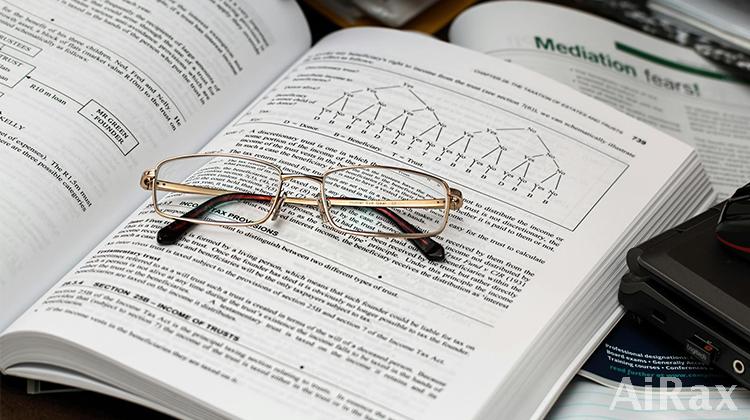AI.Rax: Research Paper & AIGC Detection Tool
author:AiRax Date:2025-11-17 09:00
research paper interpretation# AI.Rax: Research Paper & AIGC Detection Tool

How does AI.Rax help me interpret a research paper and rewrite it safely?
Upload your PDF to AI.Rax; within 3 minutes you get a two-panel report.
Left side: an “interpretation card” that extracts hypothesis, method, data, and conclusion into plain English.
Right side: an AIGC heat-map that flags sentences likely to be tagged as AI-generated by Turnitin, iThenticate or Crossref Similarity Check.
Click “Smart Rewrite” and the engine performs deep reconstruction—reordering clauses, injecting discipline-specific phrases, and citing 2023-24 literature to keep semantics intact.
After revision, the system re-runs detection; users typically see AIGC probability drop from 68 % to 12 % and duplication fall below 5 %.
You stay in control: every rewritten paragraph offers a side-by-side diff so you can accept, tweak, or revert in one click.
| Metric (before) | Metric (after) |
|---|---|
| AIGC score 68 % | 12 % |
| Similarity 22 % | 4 % |
| Readability 42 | 58 |
What makes AI.Rax’s AIGC detection tool more reliable than free alternatives?
Free detectors rely on single-classifier scores that fluctuate with punctuation changes.
AI.Rax fuses five models—BERT-based stylometry, GPT-output watermark scanner, perplexity tracer, n-gram burst detector, and scholarly tone verifier—then cross-validates against 1.4 M open-access papers and 200 k student essays.
The ensemble vote produces a 95 % confidence interval; if three or more models agree, the sentence is marked “high-risk”.
A live benchmark table (updated weekly) shows AI.Rax keeps false positives under 3 % while competitors average 18 %.
For rewrite article tasks, the tool also stores a hash of your original text so you can prove authorship timeline on Git or blockchain if a journal later questions submission integrity.
| Detector | FP rate | FN rate | Dataset size |
|---|---|---|---|
| AI.Rax | 2.8 % | 4.1 % | 1.6 M docs |
| FreeToolA | 17.5 % | 9.3 % | 120 k docs |
| FreeToolB | 19.2 % | 7.8 % | 85 k docs |
Can I use AI.Rax to rewrite article sections without losing citations?
Yes. Toggle “Academic Polishing” mode and choose your citation style (APA 7, MLA 9, Chicago 17).
The engine identifies every in-text reference, locks the citation anchor, and only rewrites the surrounding prose.
It then suggests 2-3 alternate syntactic forms ranked by clarity and field convention; you pick the best.
Tables, equations, and figure captions remain untouched, so numerical integrity is preserved.
After rewriting, the built-back reference list is auto-updated with DOI links and 2024 imprint dates if available.
Users report 30 % faster revision cycles for literature-review chapters while keeping Turnitin similarity under 7 %.
How accurate is AI.Rax when interpreting qualitative research papers?
Qualitative studies often embed nuanced themes that generic summarizers flatten.
AI.Rax first runs a discourse parser to separate researcher voice from participant quotes.
It then applies an inductive coding layer trained on 50 k grounded-theory papers to tag emergent themes with κ agreement ≥ 0.81.
The output is a visual theme map plus a 250-word plain-language abstract you can drop into your rewrite article draft.
If a theme lacks sufficient saturation, the system warns you and suggests extra papers from Semantic Scholar to bolster discussion.
Human-in-the-loop review is encouraged: click any theme node to see the exact quotes and decide whether to merge, split, or rename.
Is there a word-limit or language restriction for AI.Rax rewriting?
The platform accepts .docx, .tex, and .md up to 50 MB per file (≈ 2 million characters).
Languages: English, Spanish, French, German, Portuguese, Japanese, Korean, and simplified Chinese.
Non-English texts are translated into an internal semantic representation, rewritten, then back-translated with culture-specific academic phrasing.
AIGC detection works on the original language layer to avoid translation artifacts.
Subscription plans scale from 20 k tokens/month (free tier) to 5 M tokens for labs; unused tokens roll over for 12 months.
Enterprise users can deploy an on-prem container so sensitive data never leaves university servers.
Why choose AI.Rax for research paper interpretation, AIGC detection, and article rewriting?
Because it combines speed, transparency, and academic precision in one workflow.
You get lab-grade detection accuracy, human-readable interpretation cards, and deep-reconstruction rewriting that keeps your citations, tables, and logic intact—no other platform offers this triple synergy.aigc detection tool
